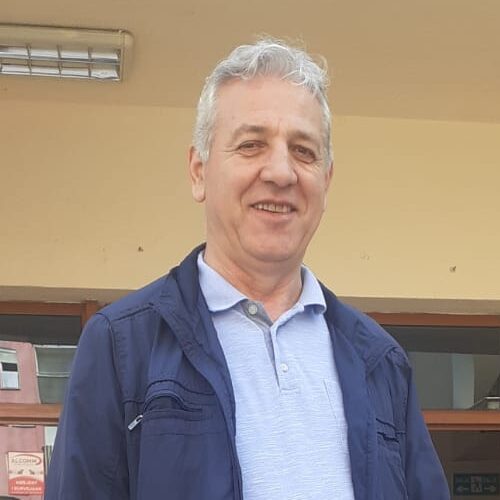
Head of the Department of Geology, Prof. Dr.
Institute of geosciences, Polytechnic University of Tirana
Graduated at the Faculty of Geology and Mining, Polytechnic University of Tirana (PUT) in 1984. Postgraduate studies on "Metallogeny of Ophiolite" at Middle East Technical University of Ankara, Turkey 1991. In 1996, received the degree "Doctor". In 2001, received the title of “Associate Professor” and in 2009, received the title of “Professor”. Fields of interest: Metallogeny of ophiolites and volcano-sedimentary formation, Structure of magmatic and metamorphic rocks, Tectonics. Scientific activity: Author/co-author in 5 monographs, 35 papers, 83 short abstracts, 13 extended abstracts, 61 oral presentations, 9 posters. Author/ co-author in about 40 national and international projects and compiling of voluminous scientific reports (9 of which in cooperation with foreign universities). Teaching at the Faculty of Geology and Mining and Faculty of Civil Engineering, PUT. Author and co-author of numerous research and exploration projects for chromium and copper minerals in Albania, Kosovo and Turkey. Head of Foreign Relations at Geological Survey of Albania (which included the Institute of Geological Research, Tirana and the Center for Geophysical Studies, Tirana) in the period 1992 -1994; Director of the Institute of Geological Research during 2006 - 2007; Head of the Department of Geosciences and Geoengineering, Institute of Geosciences (IGEO), PUT 2008 - 2009; Director of the IGEO, PUT 2009 – 2011; Head of the Department of Geology, IGEO since 2020
Structural studies, the key to success for the exploration of the chromite ore
Structural and microstructural studies have proven to be a very important element for the exploration of chromite ore deposits. The traditional method of chromite ore bodies exploration has not taken into account the plastic deformation that occurs during the formation of chromite ore deposits and consequently many chromite showings have been abandoned and considered as out of perspective. But structure of the ore deposits formed due to the plastic deformation turns out to be decisive for success of chromite ore exploration. Plastic deformation is reflected, in many cases very clearly, in many textural-structural forms of chromite ore bodies. These miniature shapes represent the morphology of the ore deposit itself and serve to orient accurately the exploration works. There are three main elements to be measured and on the basis of which the exploration works are oriented: Foliation (extension of ore body), dipping (which is perpendicular to foliation) and Lineation (plunging of the ore body). The main element that provides information for the direction of the maximum development of the chromite ore bodies is Lineation (plunging). In addition to these three elements, special attention must be paid to the detection of folding and faulting as well. In this presentation will be given examples of success of chromite ore bodies exploration based on contemporary structural studies.
